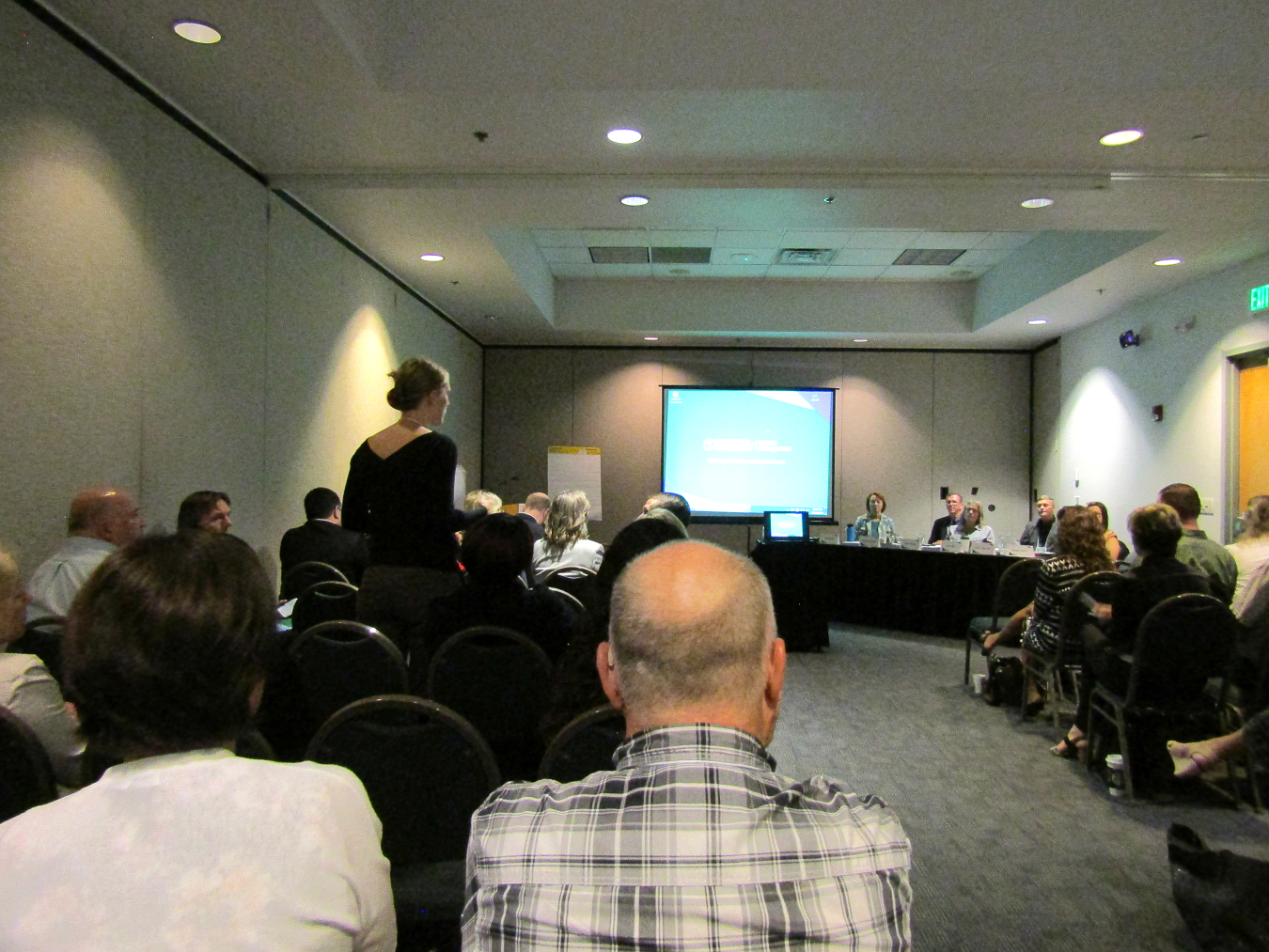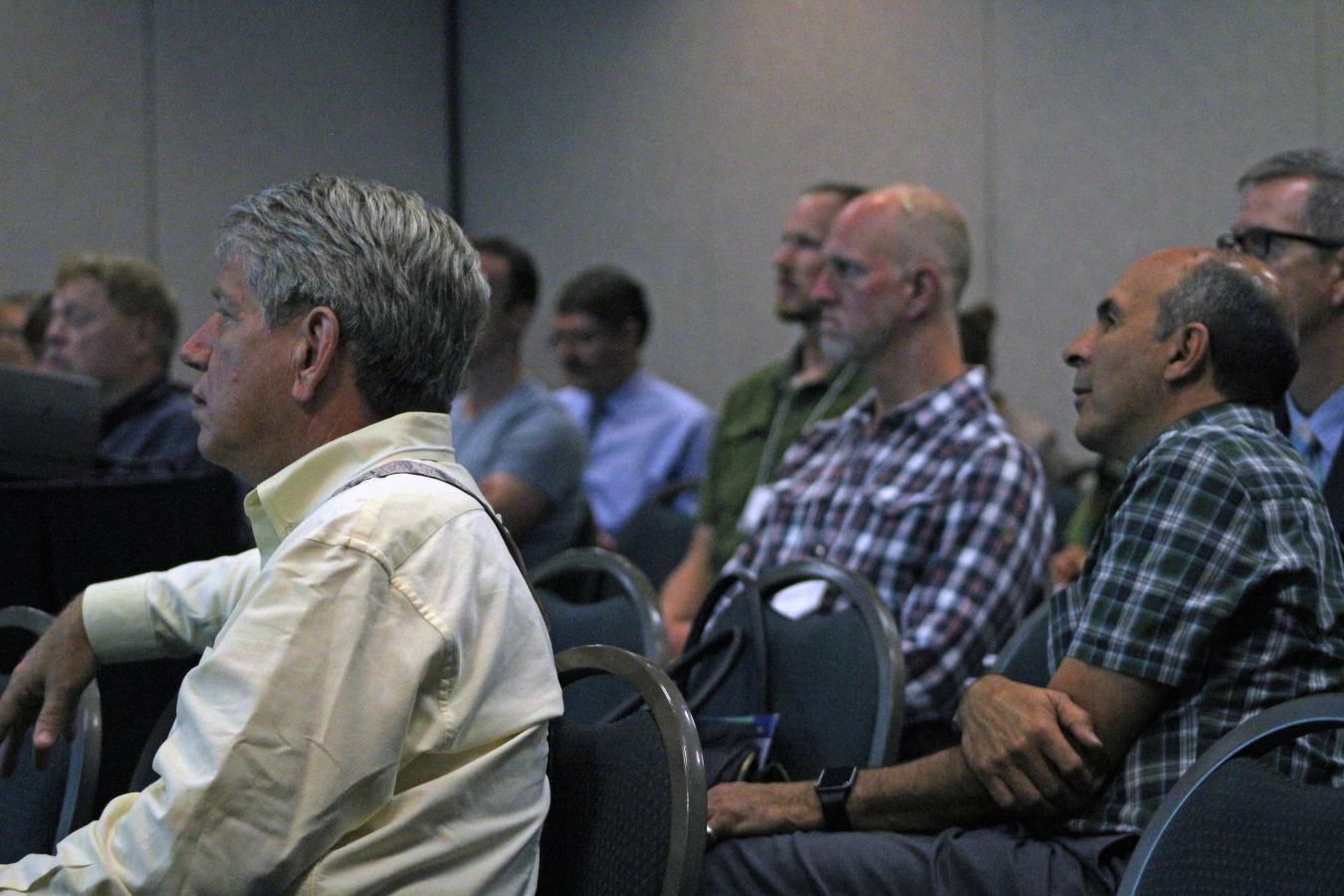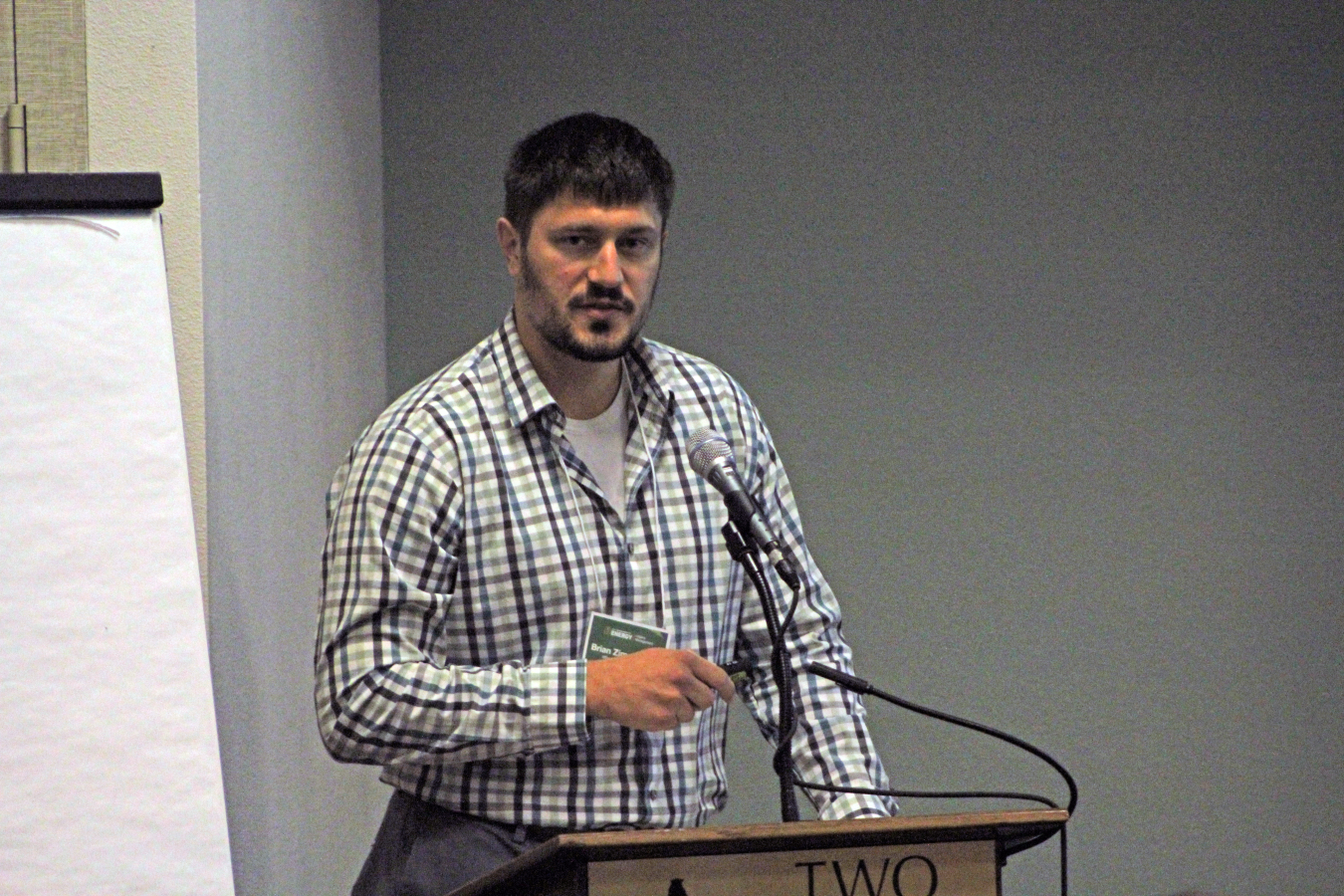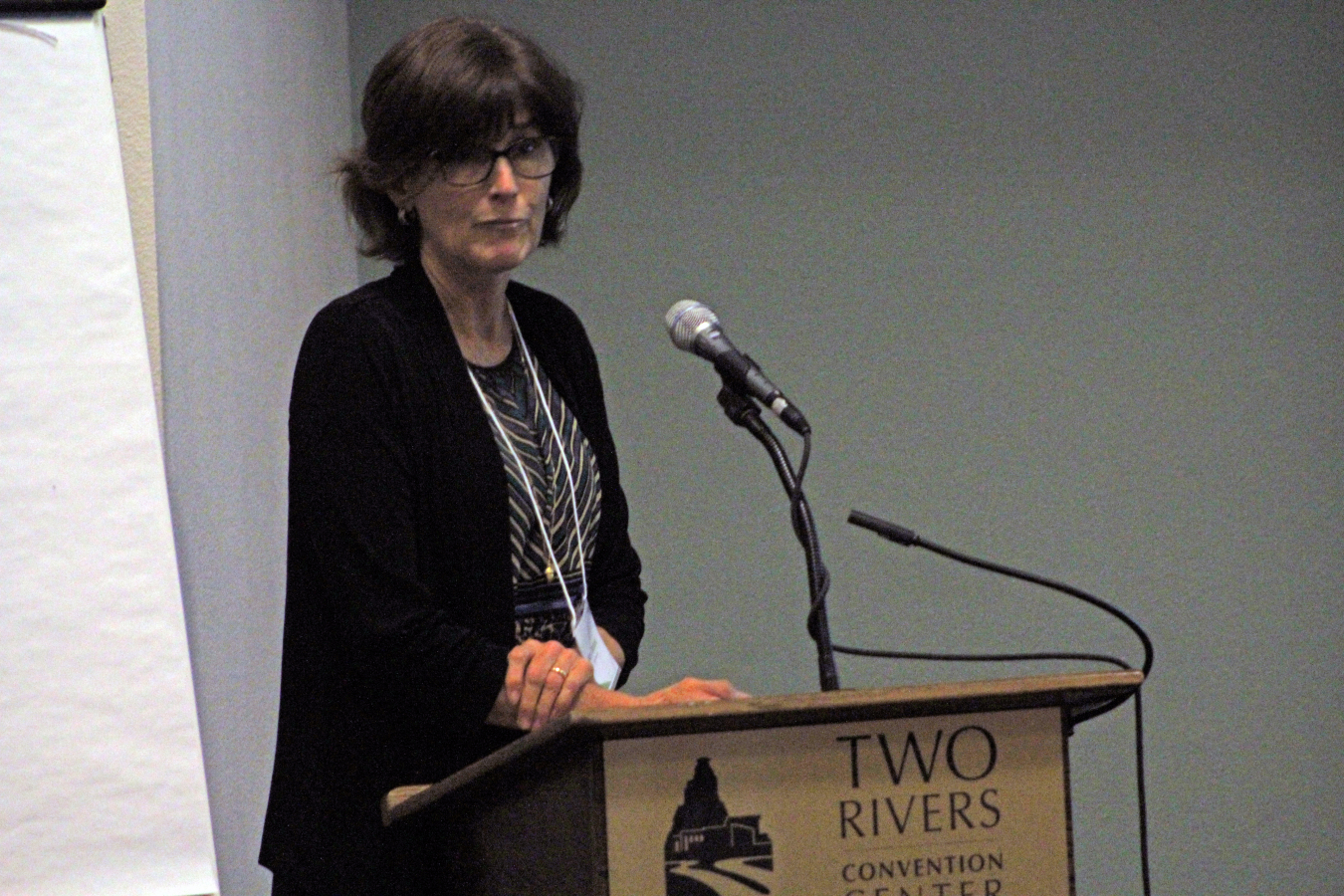Maintaining Strong Partnerships with Stakeholder and Regulatory Communities
September 28, 20182018 LONG-TERM STEWARDSHIP (LTS) CONFERENCE
Interpreting the Past and Informing the Future: A Fresh Look at History and the Preservation of Information Critical to LTS
- Mandy Askins, Mound Discovery Center (Moderator)
- Tracy Atkins, LM – Creation of the Manhattan Project National Historical Park
- Padraic Benson, LM – Grand Junction Manhattan Project Cabin to Open to Public
- Sue Smiley, LM – Visitors Center and Interpretive Services Elevate Visitor Experience at the Fernald Preserve
- Sue Smiley, LM – Preserving the Mound, Ohio, Site: The Mound Cold War Discovery Center
- Ken Starr, LM – Weldon Spring Site Interpretive Center: Progression Over the Years
- Cliff Carpenter, LM – Dr. Modesto Iriarte Technology Museum
Presenters said interpretive centers are essential to disseminating knowledge, maintaining memories, and providing deeper understanding of the sites they serve.
Partners and communities are contributing to successful interpretive centers. Tracy Atkins said the Manhattan Project National Historical Park is only possible through a partnership with the U.S. National Park Service. Referencing the Dr. Modesto Iriarte Technology Museum located in Puerto Rico, Cliff Carpenter noted that the “Puerto Rico Electric Power Authority is very engaged, very responsive, and interested in keeping this museum open.”
Interpretive centers are essential to long-term stewardship, especially in remote areas. Padraic Benson discussed the future opening of the Atomic Legacy Cabin in Grand Junction, Colorado. He said the new facility “is well suited to address this challenge.” The new interpretive center will bring information from remote mining and milling sites to a central location accessible to the public.
Two sites—Weldon Spring, Missouri, Site and Fernald Preserve, Ohio, Site—are proving to be community assets and shining examples of beneficial reuse.
“Fernald is a birder’s paradise,” said Sue Smiley. Fernald offers many acres of wetlands and terrestrial habitats used in educational programming for audiences to gain a deeper understanding of the site.
According to Ken Starr, Weldon Spring is “the most heavily used public site in the LM complex.” Weldon Spring is located just 30 miles from St. Louis and is the first interpretive center to be opened after remedial actions. Since the site’s interpretive programs support state education standards and tours of the facilities have become so popular, a new interpretive center for Weldon Spring is currently being designed and scheduled to open in 2020.

An audience member asks a question during a panel discussion regarding interpretive centers.
The Impact of Citizens and Regulators in Long-Term Stewardship: Engaging the Community Through Consultation, Coordination, and Communication
- Robert Seibert, EM (Moderator)
- Cortasha Upshaw, Navajo Nation Abandoned Mine Lands (Moderator)
- Jason Remien, Brookhaven National Laboratory – From Crisis to Collaboration: Building Stakeholder and Regulatory Partnerships Through Openness and Engagement—A Case Study
- Scott Surovchak, LM – RFLMA and the Consultative Process at Rocky Flats
- Matt Johnson, Confederated Tribes of the Umatilla Indian Reservation – Tribal Involvement in Long-Term Stewardship at the Hanford Site
- Peter Chestnut, State and Tribal Government Working Group – Closure for the Seventh Generation, 2017 Edition
Matt Johnson discussed how LM recognized the Confederated Tribes of the Umatilla Indian Reservation and other surrounding tribal nations for their involvement in the resource management at the Hanford, Washington, Site.
For centuries, tribes lived and seasonally harvested on their sacred lands that are in the Hanford area. There are over 30 specific tribal place names at the Hanford site.
“Because a whole generation has not been able to go out and access specific geographic locations, there are words from the language that have been lost from the tribal people,” said Johnson. “With the place went the story, and with the story were specific words. Without the place, you lost the words.”
As Hanford moves from the cleanup mission to long-term care, the question of who is going to manage the property is being discussed.
“It was necessary to ensure the protection of natural, cultural, and historical resources, as well as the health of tribal people,” said Johnson. “If you are protecting tribal access, tribal people, tribal natural and cultural resources, you are protecting everybody else because the tribal access means gathering more local resources, more contact with the local environment.”
Johnson discussed the long-term vision for Hanford. “We want to be partners in the process and recognize other people have roles,” said Johnson. “We have the capacity to do those things.”

Audience members listen to a presentation.
How Regulators Shape Emerging Issues with Vapor Intrusion
- Gwendolyn Hooten, LM (Moderator)
- Mary Stallard, Weiss Associates – Post-Remedy Vapor Intrusion Evaluation for the Laboratory for Energy-Related Health Research Superfund Site
- Brian Zimmerman, LM – Vapor Intrusion Assessment at the Mound, Ohio, Site
- Zafer Demir, Lawrence Livermore National Laboratory – Vapor Intrusion Pathway Analysis for LLNL Livermore Site and Site 300
- Joe Daniel, Navarro Research and Engineering, Inc. – Vapor Intrusions Mitigation for Building 100 Pinellas County, Florida, Site
Regulators discussed vapor intrusion and long-term stewardship at four different sites in a panel session. The U.S. Environmental Protection Agency (EPA) Five-Year Guidance update in 2012 requires all Superfund sites to reevaluate their vapor intrusion pathways.
As mandated by the Comprehensive Environmental Response, Compensation, and Liability Act of 1980 (CERCLA), the first Five-Year Review (FYR) of the Laboratory for Energy-Related Health Research (LEHR) site confirmed remedy protectiveness except for vapor intrusion. The EPA and state agencies advised that additional data was required to support an FYR addendum. Collection of the vapor intrusion data was successfully completed in 10 months by using a streamlined approach.
An FYR addendum with a new protectiveness statement was submitted to the regulatory agencies in July and approval is expected by September. The new statement says, “The remedy at the DOE areas of LEHR is protective of human health and the environment.”
Vapor intrusion was never evaluated in the Residual Risk Evaluation process as a potential exposure pathway for the Mound, Ohio, site. A recommendation was made to conduct a vapor intrusion assessment to determine whether complete exposure pathways are present or could be present in the future. As part of the vapor intrusion assessment, a three-phased approach was developed to identify locations of potential vapor sources and pathways.
LM has chosen to proactively address potential vapor intrusion into Building 100 at the Pinellas County, Florida, Site. Florida has neither regulations nor guidance pertaining to vapor intrusion from contaminated groundwater.
“For future involvement it’s much simpler to preemptively design-build the building so that vapor intrusion is not a problem versus after the fact when the building is already there,” said Joe Daniel.

Brian Zimmerman discusses vapor intrusion at the Mound, Ohio, Site.

Mary Stallard shares her findings regarding vapor intrusion at the LEHR Superfund site.

